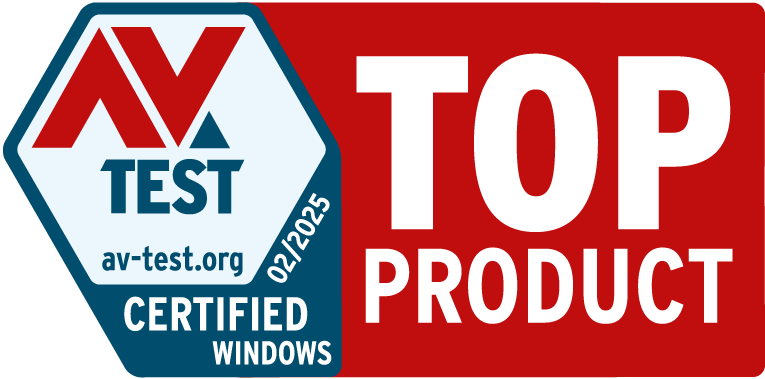What is a virtual machine?
A virtual machine (VM) is a computer that runs entirely on software instead of physical hardware. Virtual machines use software on a physical (host) computer to replicate or emulate the functionality of a different computer or operating system. In essence, a VM is a simulated computer within a real computer.
From a user perspective, virtual machines function just like normal computers. They have an operating system (OS), store files, run programs, and even have virtual hardware components. But because VMs are entirely software-based, they need to borrow hardware resources from a host computer. For example, in a virtual machine, the physical host computer’s real Central Processing Unit (CPU) is used to model a virtual CPU.
A single host computer can run multiple VMs, all with completely independent operating systems and functionality. A Windows-based computer can host a macOS virtual machine, making a Windows PC work just like a Mac. Similarly, a Mac computer can host a Windows virtual machine, which lets an Apple computer run like a PC.
VMs help businesses cut costs and optimize network performance — particularly when it comes to providing cloud software solutions and maintaining server security. There are many applications for virtual machines — VMs are used widely by designers, developers, and product testers to see how software or other designs work on different operating systems without having to buy additional devices.
Types of virtual machines
Virtual machines can perform different tasks depending on the type of VM used.
Virtual machines fall into two broad categories:
-
Process virtual machine: These VMs allow certain tools to run as if they were native or the functionality were built-in. A Windows host computer could use a Java virtual machine to run Java applications. Process virtual machines create a platform-independent program environment by masking information about the host’s hardware and OS.
-
System virtual machine: Emulating an entire operating system by sharing access to the physical features of the host, like RAM and storage, is known as a system VM. System VMs let a Windows PC run MacOS to emulate a Mac computer. A system platform can distribute the physical resources of a host between multiple VMs — each with their own copy of the OS.
What are virtual machines used for?
Virtual machines expand the computing potential of a single device, increasing the capability and flexibility of existing hardware. If a Mac user needs to run Microsoft tools, they can use a Windows virtual machine instead of getting a new computer. Or if a PC developer wants to see what their new app will look like on a Mac, they can do so with a virtual machine.
 Virtual Machines let you use different operating systems without buying a new device.
Virtual Machines let you use different operating systems without buying a new device.
Along with using software virtualization to improve efficiency and optimize PC performance, VMs allow public cloud services to more easily meet the needs of multiple users. They also enable organizations to develop effective OPSEC strategies and business continuity plans with minimal disruption to IT infrastructure.
Another common use for VMs is the creation of “dummy” versions of software or operating systems that won’t affect host machines. This allows developers and security specialists to test software and isolate infected files within a safe, quarantined environment, without the threat of malware or bugs impacting other parts of their system or network.
How do virtual machines work?
Virtual machines use special software called a hypervisor — also known as a virtual machine monitor or manager (VMM) — to emulate a host computer’s main components and hardware resources. The hypervisor acts as an intermediary between the physical host computer and the guest virtual machine, distributing resources to the VM based on individual requirements and host capacity.
Like any other app, a VM runs in a window — and you can run multiple VMs at once. For instance, along with the host computer’s OS, you can simultaneously run an Android virtual machine and a Linux virtual machine.
 Like any app, a virtual machine is run in a separate window.
Like any app, a virtual machine is run in a separate window.
What’s the difference between a container and a virtual machine?
Containers and virtual machines have similar functions, but what separates them is that while a virtual machine emulates an entire computer system — including modeling virtual hardware components — containers replicate or virtualize only software apps and their dependent files.
The most popular commercially available VMs, such as VMWare or Parallels virtual machines, use the physical resources of a host computer to create a virtualized computer that runs on its very own OS. Because containers are designed to run only individual programs, they lack the same level of virtual infrastructure, and they use the same OS kernel as their host.
But these apparent limitations also mean that containers are lighter and faster than VMs, which make containers ideal for supporting microservices where different containers run separate app components or services. And since multiple containers can run inside a VM, the two technologies are often used together.
What are the advantages of VMs
Virtual machines are extremely versatile, and businesses and professionals use them for a variety of reasons. Here are the key benefits of virtual machines:
-
Resource expansion: A VM lets you use software that’s not compatible with a host machine thereby increasing what you can do with a single device.
-
Efficiency: You can run both MacOS and Windows on one device, which saves money, physical space, and time.
-
Innovation: Developers can test their software to see how it works on other operating systems, and they can do so without worrying how any malware or bugs will affect their physical computer.
-
Safety: VMs provide integrated disaster recovery and application provisioning to greatly increase the ability of IT departments to respond to and mitigate software threats to their networks. Virtual machines are great assets in IT disaster recovery plans, which are crucial for business operations.
What are the disadvantages of VMs?
Despite their many uses, virtual machines have their downsides. The disadvantages of VMs are primarily due to the amount of computing power required to replicate another computer system. Here are some of the problems you may run into using virtual machines:
-
Instability: Running multiple VMs can max out your CPU and other critical hardware components and cause unstable performance.
-
Can be slow: A virtual machine is usually slower and less efficient than a physical machine, so you shouldn’t expect a VM to run as smoothly as its host computer.
 Virtual machines can take time to load and usually run more slowly than their physical counterparts.
Virtual machines can take time to load and usually run more slowly than their physical counterparts.
If you’re having trouble running a VM on your computer, check your RAM to help identify and resolve performance issues. And check out our dedicated performance guides with other tips to speed up your PC or fix a slow Mac.
Types of virtualization
VMs use different types of virtualization. Depending on your needs, the following kinds of virtualization can be employed individually or in combination:
-
Hardware: Also known as server visualization, hardware virtualization uses a hypervisor to create virtual versions of computers and operating systems, so you can run a Linux or Windows VM on Mac hardware.
-
Software: By creating a virtual system that uses the same physical features as the host, software virtualization lets you use non-native apps, and it can give you remote access to virtual apps.
-
Storage: Virtual storage can consolidate different physical storage devices into one. And virtual storage can be duplicated, which reduces downtime should a cyber attack occur.
-
Desktop: Desktop virtualization stores your desktop on a remote server, meaning you can access it remotely anywhere, and from any device.
-
Network: Used to create multiple sub-networks on the same physical network, network virtualization maximizes performance for individual clients by automatically adjusting bandwidth and servers.
Do VMs improve security?
Virtual machines are vital tools that developers use to create cybersecurity solutions to manage threats. They help fight computer viruses and block hacking attempts. Virtual machines let IT professionals create secure sandbox environments so they can safely open and examine dangerous files without affecting their device or the rest of the network.
Just one infected file can spread rapidly through a network, causing untold damage and disruption. Using a virtual machine helps developers or IT teams isolate infected apps or files, protecting host computers from harm and preventing the spread of malicious software.
But if you think your personal computer is already infected, check out our guide and act quickly to remove the virus.
Comprehensive security starts with Avast
Virtual machines are a great resource for all sorts of applications, but effective cybersecurity should never rely on just a single layer of protection. Avast Free Antivirus features an arsenal of security resources, offering ironclad protection from today’s array of online threats. Download Avast today to keep your system safe and your data secure.



 Virtual Machines let you use different operating systems without buying a new device.
Virtual Machines let you use different operating systems without buying a new device. Like any app, a virtual machine is run in a separate window.
Like any app, a virtual machine is run in a separate window. Virtual machines can take time to load and usually run more slowly than their physical counterparts.
Virtual machines can take time to load and usually run more slowly than their physical counterparts.




/Academy-The-best-cleaning-software-for-Mac-Thumb.jpg)


/Academy-How%20to%20check%20storage%20on%20Mac-Thumb.jpg)
/Academy-The-best-cleaning-software-for-Windows--Thumb.jpg)